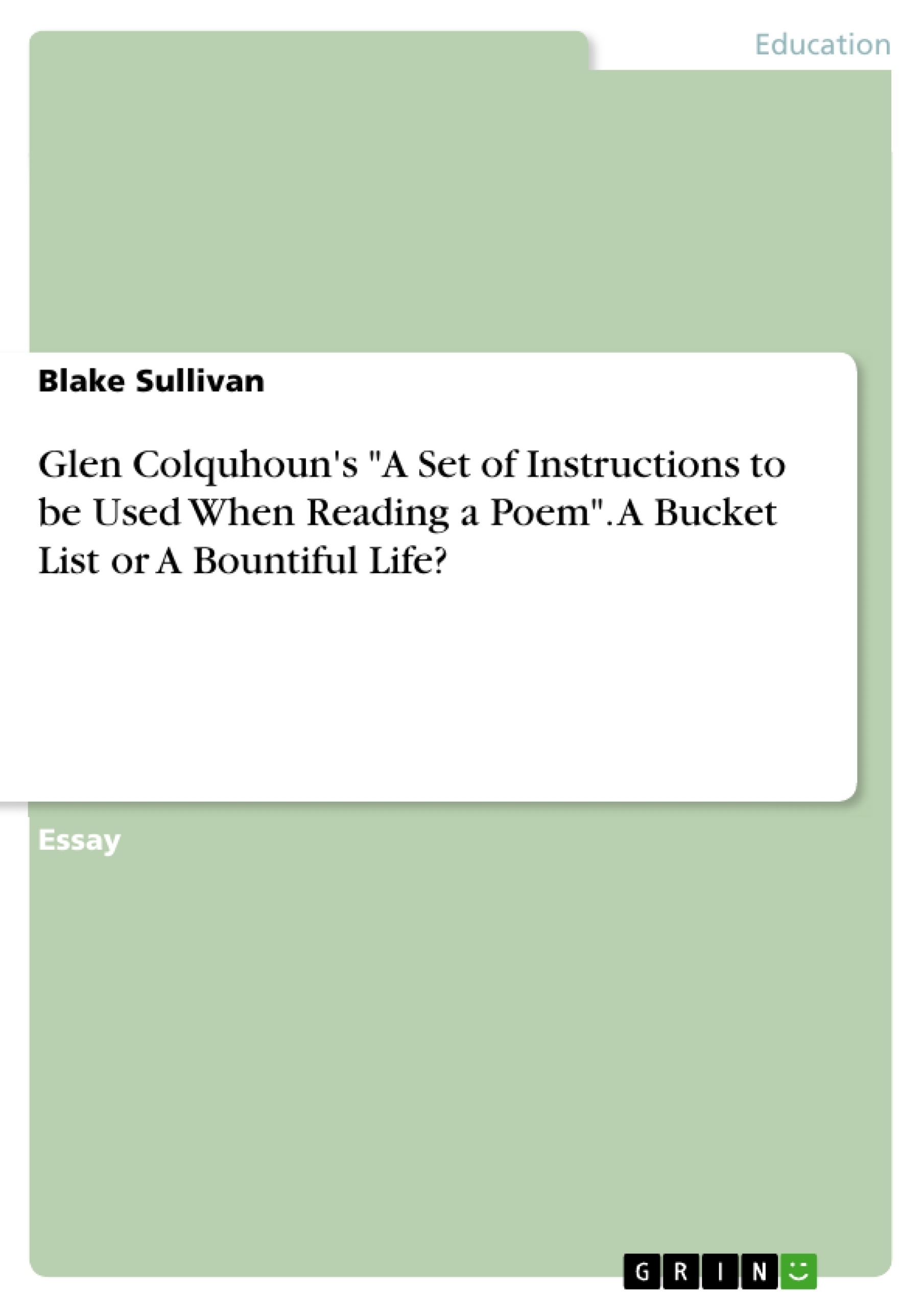Poetry, unfortunately, is often misunderstood as a collection of words splattered on a piece of paper forcing the reader to navigate through unfamiliar language landmarks such as stanzas, rhyming couplets and figurative language. However, Glen Colquhoun’s free verse poem, A Set of Instructions to be Used When Reading a Poem, effectively constructs a reader friendly poem with a hidden meaning on how to live life bountifully. More specifically, by analyzing Colquhoun’s use of structure and tropology it is evident that the poem’s underlying insight is to live life to its maximum disguised within its obvious list of instructions.
Inhaltsverzeichnis (Table of Contents)
- A Bucket List or A Bountiful Life?
- The Poet's Use of Unassuming Structure
- The Poet Divides the Poem into Distinct Sensory Experiences
- Colquhoun Uses Tropology to Show the Richness and Complexity of a Person's Life
Zielsetzung und Themenschwerpunkte (Objectives and Key Themes)
The main objective of the essay is to analyze Glenn Colquhoun's free verse poem, "A Set of Instructions to be Used When Reading a Poem," and demonstrate how the poem's structure and use of tropology encourage readers to live life to the fullest.
- The importance of embracing life's experiences, both ordinary and extraordinary.
- The value of sensory engagement and individual interpretation in appreciating life.
- The significance of embracing risk, individuality, and non-conformity.
- The inherent beauty and complexity found in even the most mundane aspects of life.
- The power of language and poetry to inspire and challenge perspectives on life.
Zusammenfassung der Kapitel (Chapter Summaries)
- A Bucket List or A Bountiful Life?: This introductory section establishes the poem's unique structure and explores its underlying message of living life to its fullest. It highlights the poem's seemingly simple instructions, disguised within its ordinary format, as a subtle encouragement to maximize one's life experiences.
- The Poet's Use of Unassuming Structure: This section delves into the poem's structural elements, analyzing how the sequential numeric format, casual tone, and division into distinct sensory experiences contribute to the overall theme of embracing life's richness. The poet's intentional use of sensory experiences invites readers to engage with the poem on a personal level, making each individual's experience unique and meaningful.
- The Poet Divides the Poem into Distinct Sensory Experiences: This section explores the poem's deliberate progression through tactile, gustatory, auditory, and visual experiences. Colquhoun's careful pacing ensures that each sense is explored independently, allowing readers to fully appreciate the individual sensory experiences before being overwhelmed by the totality of life's complexities.
- Colquhoun Uses Tropology to Show the Richness and Complexity of a Person's Life: This section examines Colquhoun's use of tropology, specifically analogies and metaphors, to convey the richness and complexity of life even in seemingly ordinary circumstances. By comparing the poem to familiar objects and experiences, Colquhoun encourages readers to find meaning and beauty in the everyday routine, urging them to embrace life's challenges and celebrate their individuality.
Schlüsselwörter (Keywords)
Key themes and concepts explored in the essay include free verse poetry, structure, tropology, sensory experiences, life's richness, individual interpretation, risk-taking, non-conformity, embracing the ordinary, and the power of language to inspire and challenge perspectives.
- Quote paper
- Blake Sullivan (Author), 2014, Glen Colquhoun's "A Set of Instructions to be Used When Reading a Poem". A Bucket List or A Bountiful Life?, Munich, GRIN Verlag, https://www.grin.com/document/285193



